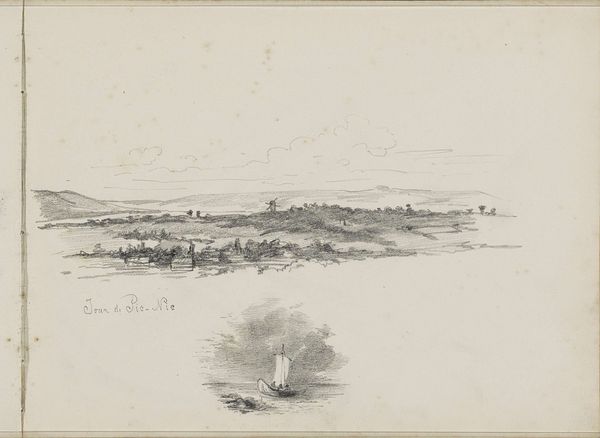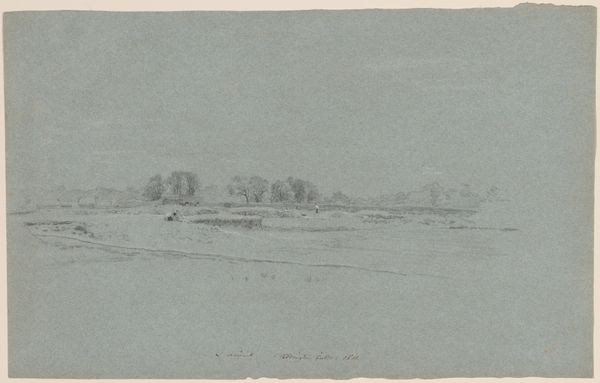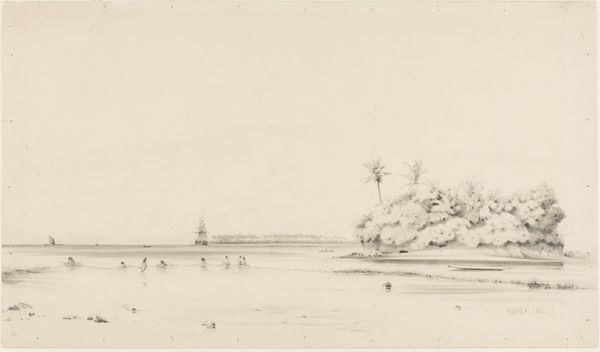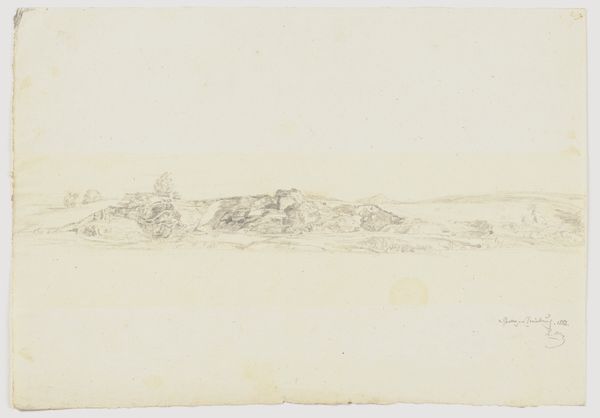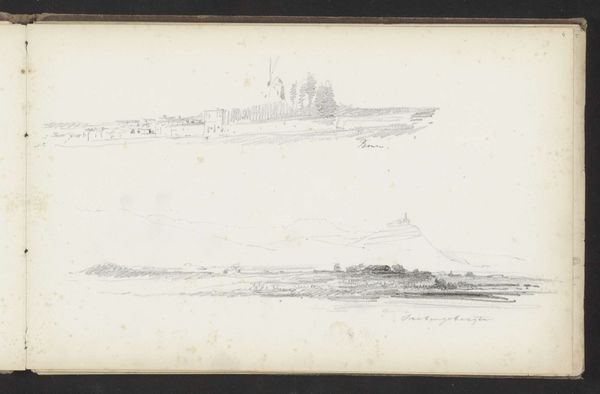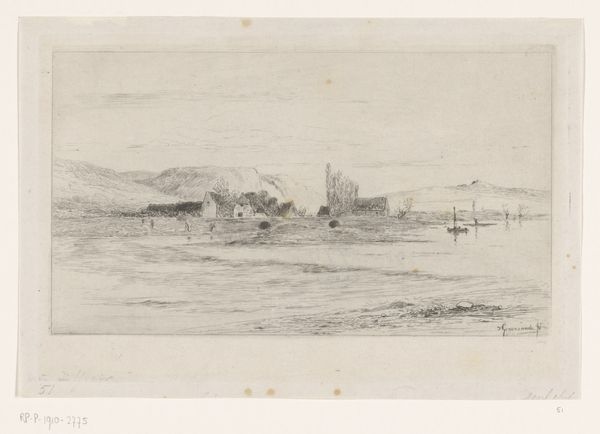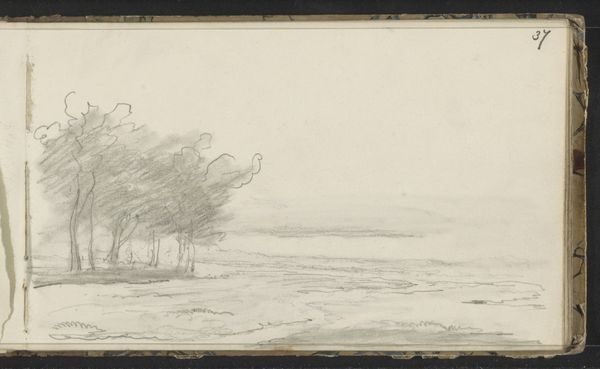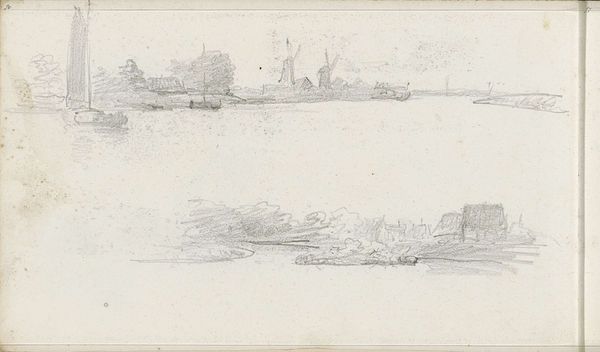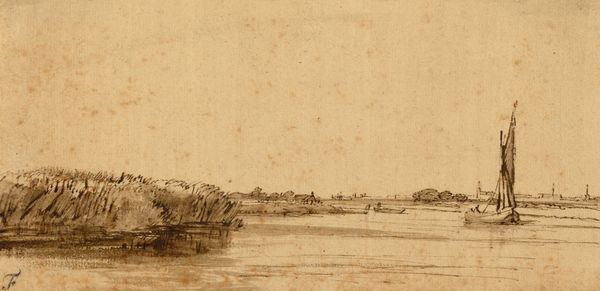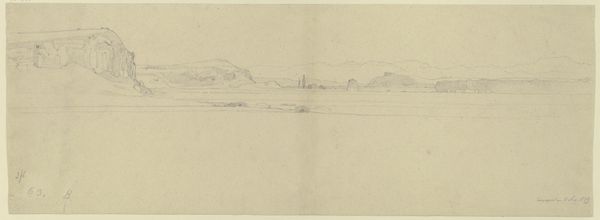
drawing, pencil
#
drawing
#
landscape
#
pencil
Dimensions: 240 mm (height) x 295 mm (width) (bladmaal)
Curator: Here we have "Landskab," a pencil drawing from 1909 by J.A. Jerichau. Editor: My initial thought? Restrained. Deliberately so, perhaps. It's like holding my breath while looking out at a very still ocean. Curator: Interesting. Considering the context, that stillness may be intentional. Jerichau, as an artist, was meticulous about the selection of materials, pencil hardness, paper type, fixative; this piece becomes a document of quiet observation. One can appreciate the labor intensity concealed beneath this understated facade. Editor: Yes, but does all that rigor result in something engaging? Or just academic? Look at the pencil strokes—short, controlled—almost hesitant. I sense a deliberate withholding, perhaps reflecting the social mores of the time. A landscape hiding something... Curator: Perhaps. Or perhaps revealing a quiet truth. It reminds us of how landscapes are often perceived as being open and free—yet this one communicates a quiet, constructed, controlled existence, reflecting a human presence. Look at the horizon line, and the water’s reflection, built out of repeated gestures. One imagines him out there, the soft pencil against the textured paper, building something monumental. Editor: I still feel like the technique here suppresses more than it reveals. But maybe that tension is exactly what gives it its power. The way those faint horizontal lines create this sense of endless space, contrasted with the confined marks defining the treeline. It evokes this odd balance between freedom and constraint, which circles us back to your focus on method. Curator: Exactly. To focus on production as a form of careful self-expression allows one to engage in material choices, artistic methods and labor, pushing aside that typical obsession with emotional outpouring to achieve something different. It’s almost as if Jerichau created his own reality by meticulously drafting the surface, building layer upon layer until the land comes to life in a controlled way. Editor: It has given me much to reflect on and I feel I am perceiving art making as less an emotional endeavor, and more as the output of complex decision making. Curator: I find this dialogue to be a perfect case study to understand that artistic interpretation can differ so wildly from one beholder to another!
Comments
No comments
Be the first to comment and join the conversation on the ultimate creative platform.
